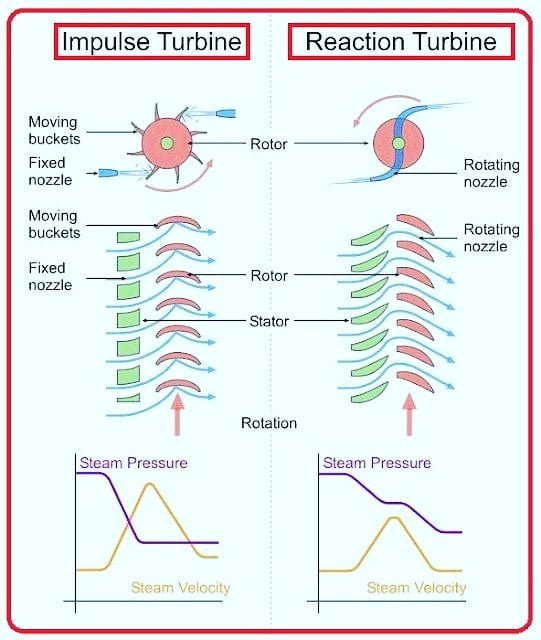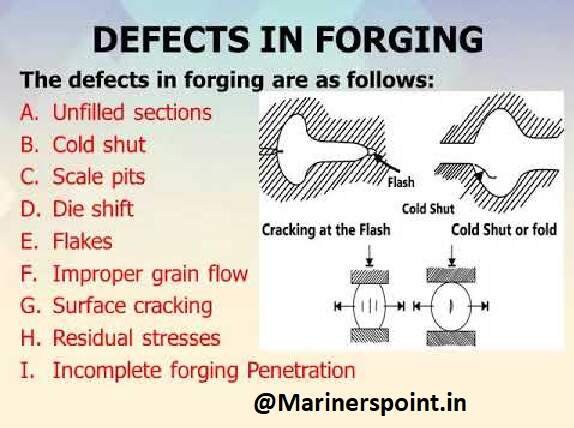Difference Between Impulse and Reaction Turbine
The main difference between Impulse and Reaction Turbine are as follows :
| Impulse Turbine | Reaction Turbine |
| 1. Stream strikes on the moving blade after passing through the nozzle. | 1. Steam flows through the guide mechanism and then to the moving blades. |
| 2. Steam expands in the nozzle converting all pressure energy into kinetic energy. | 2. Steam gets to expand partially in the fixed blades and as a result only some part of pressure energy is converted into kinetic energy. |
| 3. Constant steam pressure on the blades. | 3. Pressure on blades is not constant. |
| 4. Efficiency is Low | 4. Efficiency is High |
| 5. Space per unit power required is less. | 5. Space per unit power required is more. |
| 6. Operates at High water heads. | 6. Operates at medium or less water heads. |
| 7. The steam may or may not cover the whole circumference. | 7. The steam must cover the whole circumference. |
| 8. Constant relative velocity of steam while passing through blades. | 8. Relative velocity increases while passing through the blades. |
| 9. Less maintenance required. | 9. High maintenance required. |
| 10. Less staging is required for same power | 10. More number of staging is required for same power. |
| 11. High steam and turbine velocity | 11. Comparatively less steam and turbine velocity. |
| 12. Installed above the tailrace. | 12. Installed below the tailrace ( submerged in water) |
| 13. No draft tube required | 13. Draft tube required. |
| 14. Works at atmospheric pressure | 14. Works above atmospheric pressure |
| 15. Ex : Pelton Wheel Turbine | 15. Ex : Francis Turbine, Kaplan Turbine |
Lets discuss some of the difference between Impulse and Reaction turbine individually .
Impulse Turbine
1. In impulse turbine all hydraulic energy is converted into kinetic energy by a nozzle and it is the jet so produced which strikes the runner blades.
2. The velocity of jet which changes, the pressure throughout remains at atmospheric pressure.
3. Water-tight casing is not necessary. Casing has no hydraulic function to perform. It only serves to prevent splashing and guide water to the tail race.
4. Water is admitted only in the form of jets. There may be one or more jets striking equal number of buckets simultaneously.
5. The turbine doesn’t run full and air has a free access to the bucket.
6. The turbine is always installed above the tail race and there is no draft tube used.
7. Flow regulation is done by means of a needle valve fitted into the nozzle.
Reaction Turbine
1. In reaction turbine only some amount of the available energy is converted into kinetic energy before the fluid enters the runner.
2. Both pressure and velocity changes as fluid passes through a runner. Pressure at inlet is much higher than at outlet.
3. The runner must be enclosed within a watertight casing.
4. Water is admitted over the entire circumference of the runner.
5. Water completely fills at the pass ages between the blades and while flowing between inlet and outlet sections does work on the blades.
6. Reaction turbine are generally connected to the tail race through a draft tube which is a gradually expanding passage. It may be installed below or above the tail race.
7. The flow regulation in reaction turbine is carried out by means of a guide-vane assembly. Other component parts are scroll casing, stay ring runner and the draft tube.
Thank you




